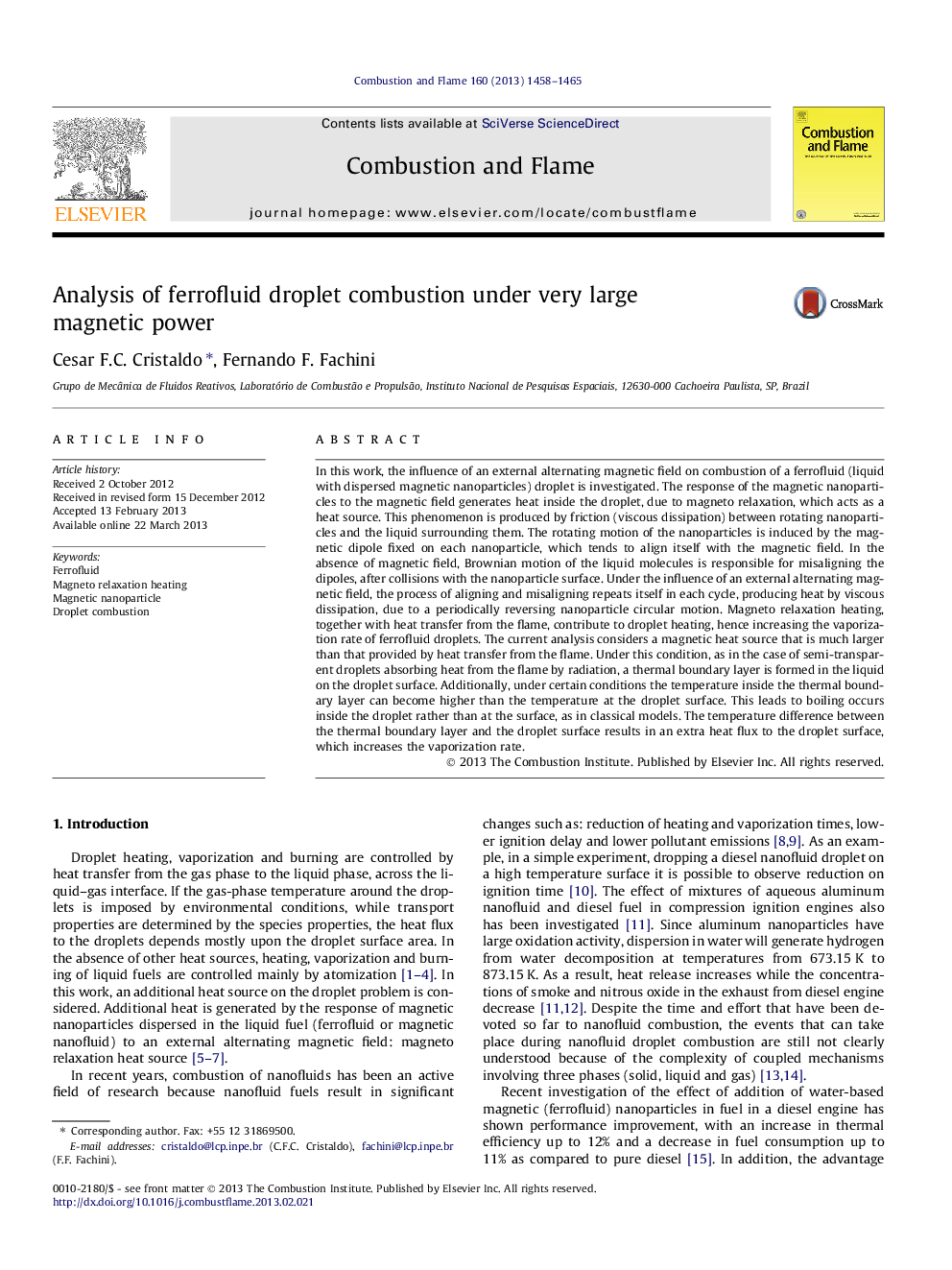| کد مقاله | کد نشریه | سال انتشار | مقاله انگلیسی | نسخه تمام متن |
|---|---|---|---|---|
| 168888 | 457958 | 2013 | 8 صفحه PDF | دانلود رایگان |

In this work, the influence of an external alternating magnetic field on combustion of a ferrofluid (liquid with dispersed magnetic nanoparticles) droplet is investigated. The response of the magnetic nanoparticles to the magnetic field generates heat inside the droplet, due to magneto relaxation, which acts as a heat source. This phenomenon is produced by friction (viscous dissipation) between rotating nanoparticles and the liquid surrounding them. The rotating motion of the nanoparticles is induced by the magnetic dipole fixed on each nanoparticle, which tends to align itself with the magnetic field. In the absence of magnetic field, Brownian motion of the liquid molecules is responsible for misaligning the dipoles, after collisions with the nanoparticle surface. Under the influence of an external alternating magnetic field, the process of aligning and misaligning repeats itself in each cycle, producing heat by viscous dissipation, due to a periodically reversing nanoparticle circular motion. Magneto relaxation heating, together with heat transfer from the flame, contribute to droplet heating, hence increasing the vaporization rate of ferrofluid droplets. The current analysis considers a magnetic heat source that is much larger than that provided by heat transfer from the flame. Under this condition, as in the case of semi-transparent droplets absorbing heat from the flame by radiation, a thermal boundary layer is formed in the liquid on the droplet surface. Additionally, under certain conditions the temperature inside the thermal boundary layer can become higher than the temperature at the droplet surface. This leads to boiling occurs inside the droplet rather than at the surface, as in classical models. The temperature difference between the thermal boundary layer and the droplet surface results in an extra heat flux to the droplet surface, which increases the vaporization rate.
Journal: Combustion and Flame - Volume 160, Issue 8, August 2013, Pages 1458–1465